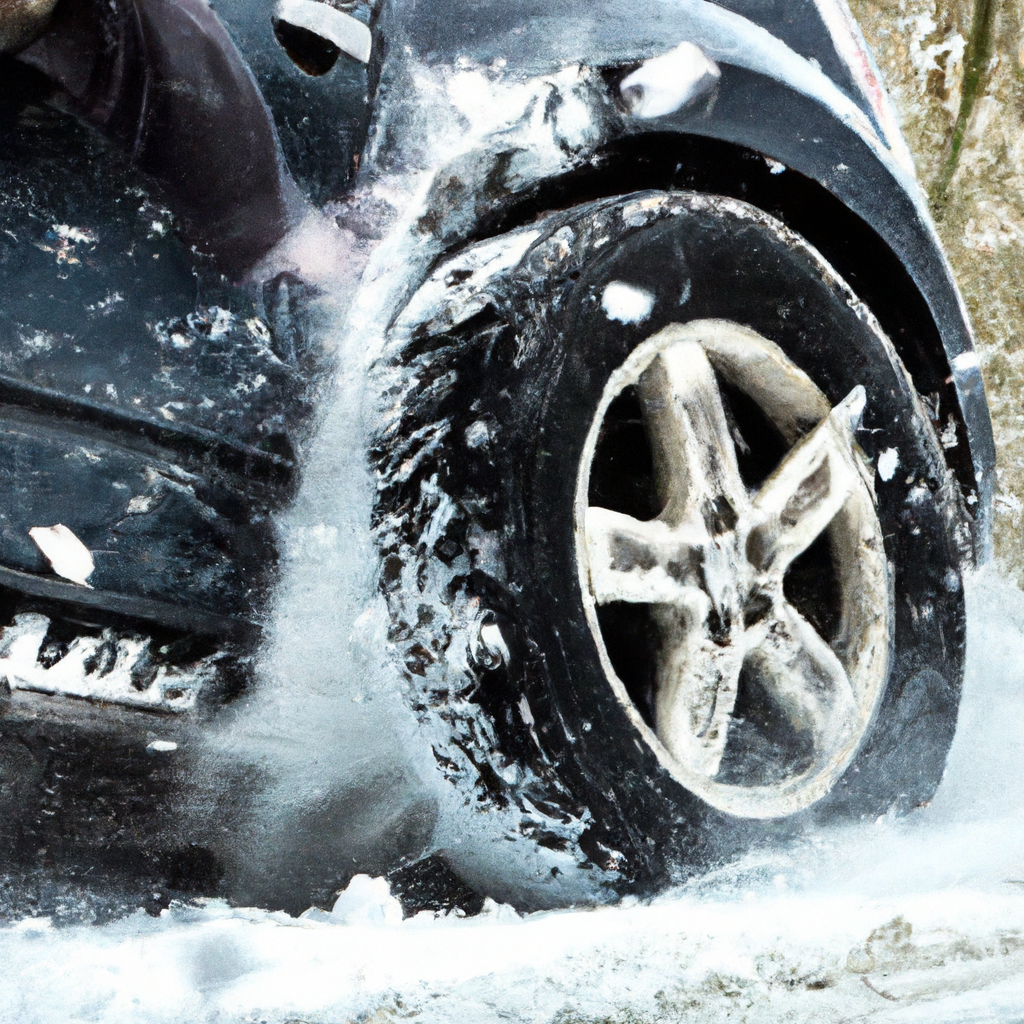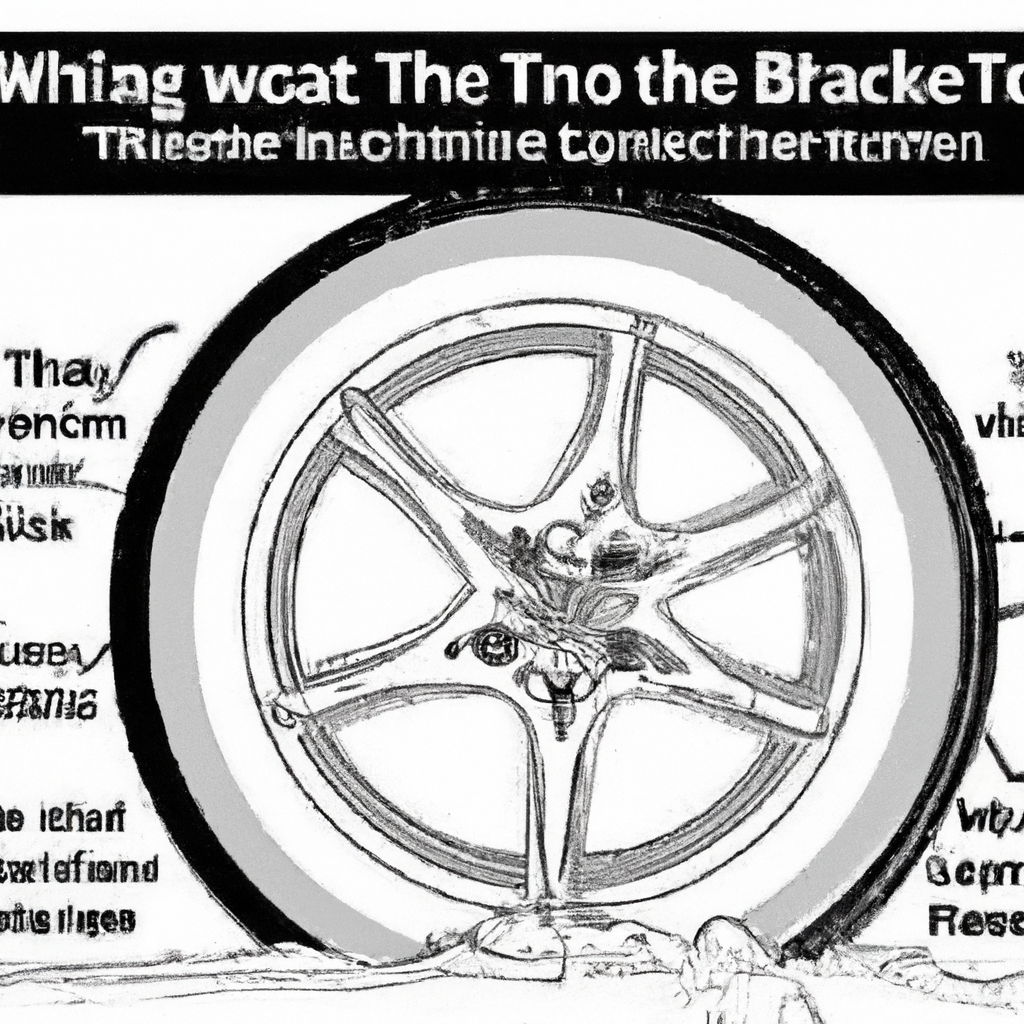Winter tires play a crucial role in ensuring your safety on icy and snow-covered roads, especially when it comes to braking. Curious to know how these specialized tires affect your vehicle’s braking performance? Look no further! In this article, we will explore the impact of winter tires on your ability to stop effectively, providing you with valuable insights into the importance of these winter essential. So, buckle up and discover how winter tires can make a significant difference in keeping you and your loved ones safe during the colder months!
The Importance of Winter Tires
Enhanced Grip on Cold Surfaces
When it comes to winter driving, one of the most crucial aspects is maintaining a firm grip on the road surface. Winter tires are specifically designed to offer enhanced grip on cold surfaces. The rubber compound used in winter tires remains flexible in low temperatures, allowing the tire tread to conform to the road and provide better traction. With winter tires, you can feel confident knowing that your vehicle has the ability to handle icy roads and maintain stability, even during the harshest winter conditions.
Improved Traction on Snow and Ice
Snow-covered and icy roads pose a significant challenge for any driver. However, with winter tires, you can significantly improve your vehicle’s traction on these treacherous surfaces. The deeper tread patterns found on winter tires are designed to grip into the snow, allowing for better control and maneuverability. Additionally, many winter tires feature sipes and grooves that further enhance traction by channeling snow and slush away from the tire’s contact patch. With improved traction, you can reduce the chances of skidding or spinning out, providing a safer driving experience during winter months.
Better Braking Performance in Cold Temperatures
Braking is a critical aspect of driving, especially during winter when roads can be slippery. Winter tires offer better braking performance in cold temperatures. The rubber compound used in winter tires is specifically formulated to remain flexible in cold weather. This flexibility allows the tire to grip the road better, resulting in shorter braking distances. When you need to come to a stop quickly on a winter road, having winter tires can make all the difference in preventing accidents and keeping you and your passengers safe.
Understanding Braking Performance
Factors Affecting Braking Distance
Braking distance refers to the distance your vehicle travels from the moment you apply the brakes until it comes to a complete stop. Several factors can significantly impact braking distance. These factors include the condition of your tires, the road surface, your vehicle’s speed, and the effectiveness of your braking system. By understanding these factors, you can work towards improving your braking performance and ensuring your safety on the road.
Importance of Tire Grip
Tire grip plays a crucial role in braking performance. When you apply the brakes, the friction between the tires and the road surface is what slows down your vehicle. A lack of grip can result in increased braking distance and a loss of control. This is where winter tires shine, as they provide superior grip in cold conditions. The tread design and rubber compound of winter tires allow for better traction, ensuring that the tires maintain contact with the road, even when braking.
Role of Friction in Braking
Friction is the force that opposes motion between two surfaces in contact. In the context of braking, the friction between the tires and the road surface is what allows your vehicle to slow down and come to a stop. Winter tires are designed to maximize the friction between the tire and the road, thereby enhancing braking performance. This increased friction helps to reduce braking distances and improve overall control, providing peace of mind when driving on slippery winter roads.

Winter Tire Design
Deeper Tread Patterns
Winter tires are distinguished by their deeper tread patterns compared to all-season tires. The depth of the tread plays a crucial role in maintaining traction on snow and ice. The additional depth allows the tire to bite into the snow, creating channels for improved grip. This is particularly important for braking as the deeper tread provides more surface area for friction, resulting in better control and shorter stopping distances.
Sipes and Grooves
Sipes and grooves are small interlocking slits or channels built into the tire’s tread. These features are key components of winter tire design as they help to enhance traction on snowy and icy surfaces. Sipes create additional edges for the tire to grip the road, improving braking performance and reducing the risk of skidding. Grooves, on the other hand, work to evacuate water and slush from the tire’s contact patch, further enhancing traction and reducing the chances of hydroplaning.
Rubber Compound
The rubber compound used in winter tires is specifically formulated to remain flexible in cold temperatures. This flexibility allows the tire to maintain its grip on the road, even in freezing conditions. Unlike all-season tires, which can harden and lose grip in cold weather, winter tires remain pliable, ensuring optimal performance. The specialized rubber compound used in winter tires helps to ensure safer and more reliable handling during winter driving conditions.
Lamellae and Microscopic Slits
Lamellae and microscopic slits are additional features found in some winter tires. Lamellae are small slits cut into the tread blocks, allowing for better grip on ice and packed snow. These slits create additional biting edges, enabling the tire to dig into icy surfaces and provide enhanced traction during braking. Microscopic slits, on the other hand, help to improve the tire’s grip on wet surfaces by supporting water dispersion and reducing the risk of hydroplaning.
Stud Options
Some winter tires also offer the option for metal studs to be inserted into the tread for even greater traction on ice. Studs are small metal pins that protrude from the tire, enhancing grip on icy surfaces. However, it’s important to note that studded tires may not be legal or necessary in all areas. Check with local regulations and consider your specific driving conditions before opting for studded winter tires.
Shortened Braking Distance
Improved Braking on Snow and Ice
One of the most significant advantages of winter tires is their ability to shorten braking distances on snow and ice. The deeper tread patterns, sipes, and grooves found in winter tires are specifically designed to bite into and grip snowy and icy surfaces. This enhanced traction allows for more effective braking, reducing the time and distance required to come to a complete stop. With winter tires, you can have peace of mind knowing that your vehicle can bring you to a safe stop, even on the most challenging winter roads.
Enhanced Control in Cold Temperatures
Winter tires not only improve braking performance but also provide enhanced control in cold temperatures. The flexibility of the rubber compound allows the tire to maintain its grip on the road, providing better control when cornering and maneuvering. This increased control translates to a safer driving experience, as you can navigate icy or snow-covered roads with confidence and precision.
Reduced Aquaplaning Risks
Aquaplaning occurs when a layer of water builds up between the tire and the road surface, causing a loss of traction and control. Winter tires are designed to reduce the risk of aquaplaning by channeling water and slush away from the tire’s contact patch. The tread patterns, sipes, and grooves work together to disperse water, ensuring that the tire maintains contact with the road surface. By minimizing the chances of aquaplaning, winter tires contribute to safer braking and overall vehicle control on wet winter roads.

Factors Impacting Winter Tire Braking Performance
Tire Pressure
Proper tire pressure is crucial for optimal braking performance. Underinflated or overinflated tires can negatively affect grip, stability, and braking distances. It’s important to regularly check your tire pressure, especially during winter when temperature fluctuations can impact tire pressure. Refer to your vehicle’s manufacturer recommendations or consult a professional to ensure that your winter tires are properly inflated.
Tire Wear
The condition of your winter tires can significantly impact their braking performance. As tires wear down, the tread depth decreases, reducing the tire’s ability to grip the road. It’s essential to monitor your tire tread depth and replace your winter tires if they are worn beyond safe limits. Proper maintenance and timely replacement will ensure that your winter tires continue to provide optimal braking performance throughout the season.
Driving Speed
Driving at excessive speeds can compromise braking performance, particularly on slippery winter roads. Higher speeds increase the force required to bring the vehicle to a stop, resulting in longer braking distances. To maximize the effectiveness of your winter tires’ braking capabilities, it’s important to drive at appropriate speeds for the road conditions. Slowing down allows your tires to maintain better traction and significantly reduces the risk of accidents.
Road Conditions
Winter roads can be highly unpredictable, varying from lightly snow-covered to ice-packed surfaces. The condition of the road directly affects your winter tires’ braking performance. Snowy and icy roads generally require more time and distance to come to a stop. It’s crucial to adapt your driving style and braking technique to the specific road conditions. By driving cautiously and allowing for increased braking distances, you can navigate winter roads with greater safety and confidence.
Cold Weather Considerations
Tire Performance at Low Temperatures
Winter tires are specifically designed to maintain optimal performance in low temperatures. Unlike all-season tires, which may harden and lose flexibility in cold weather, winter tires remain pliable. This flexibility results in improved grip and control, ensuring that your tires can adapt to the changing conditions of winter roads. Whether it’s icy, snowy, or wet, winter tires are engineered to perform at their best when the mercury drops.
Effectiveness in Dry and Wet Conditions
While the primary focus of winter tires is their performance in snow and ice, they also offer advantages in dry and wet conditions. The deeper tread patterns and specialized rubber compound of winter tires provide better traction and grip, even on dry pavement. Additionally, the sipes and grooves present in winter tires help to disperse water, reducing the risk of hydroplaning on wet winter roads. This versatility makes winter tires an excellent choice for regions with fluctuating winter weather conditions.
Limitations in Extreme Cold
Extreme cold temperatures can pose challenges for winter tires. In extremely cold conditions, the rubber compound in winter tires may harden, reducing their grip and overall performance. However, it’s important to note that extreme cold weather is uncommon in many regions, and winter tires remain effective in most winter driving situations. If you frequently encounter extremely cold temperatures, consider opting for specific winter tires designed for severe cold climates.

Comparing Winter and All-Season Tires
Differences in Tread Design
One of the main differences between winter and all-season tires lies in their tread design. Winter tires feature deeper and more aggressive tread patterns compared to all-season tires. The deeper treads provide enhanced traction on snow and ice, allowing for better grip during braking. On the other hand, all-season tires have tread patterns designed to provide acceptable performance in a wide range of weather conditions, sacrificing some snow and ice performance for year-round versatility.
Traction and Grip Variations
Winter tires and all-season tires differ significantly in terms of traction and grip. Winter tires are specifically engineered to excel in snowy and icy conditions, with specialized features such as sipes, grooves, and a flexible rubber compound. These features contribute to superior grip and traction, particularly during braking. All-season tires, while capable in mild winter conditions, may struggle on more challenging winter surfaces, compromising braking performance.
Braking Performance Contrasts
When it comes to braking performance, winter tires outshine all-season tires on snow and ice. The deeper tread patterns, specialized rubber compounds, and unique tire design elements of winter tires enable them to offer superior braking capabilities on wintry surfaces. All-season tires, while providing adequate performance in milder winter conditions, may struggle to deliver the same level of grip and control as winter tires. For optimal braking performance during winter, opting for dedicated winter tires is highly recommended.
Recommended Winter Tire Maintenance
Checking Tire Pressure Regularly
Regularly monitoring your winter tire pressure is essential for maintaining optimal braking performance. Cold weather can cause fluctuations in tire pressure, so it’s crucial to check your tire pressure regularly, especially during winter. Properly inflated tires ensure that your vehicle can grip the road effectively, maximizing braking performance and overall safety. Refer to your vehicle’s manual or consult a professional to determine the recommended tire pressure for your winter tires.
Rotating Tires for Even Wear
Tire rotation is an essential maintenance practice that helps ensure even wear across all four of your winter tires. Uneven tire wear can affect braking performance and compromise your safety on the road. By rotating your tires regularly, you can extend their lifespan and maintain consistent traction and grip throughout the winter season. Consult your vehicle’s manual or seek advice from a tire professional to determine the appropriate rotation intervals for your specific winter tires.
Replacing Worn-Out Tires
Monitoring the tread depth of your winter tires is crucial for maintaining optimal braking performance. Over time, the tread on your tires will wear down, compromising their ability to grip the road. Worn-out winter tires can significantly increase braking distances and decrease overall control. It’s important to regularly inspect your tires for signs of wear and replace them if they fall below the recommended tread depth. This proactive approach will ensure that your winter tires continue to provide the performance you need during winter driving.
Storing Tires Properly during Off-Season
Properly storing your winter tires during the off-season is essential for maintaining their performance and longevity. When not in use, it’s important to store your tires in a cool, dry space away from direct sunlight and sources of heat. Tires should be kept upright or suspended to avoid deformation. Additionally, it’s recommended to clean and dry the tires before storage. By taking these steps, you can preserve the quality and performance of your winter tires, ensuring they are ready to keep you safe on the road when winter arrives.

Potential Drawbacks of Winter Tires
Reduced Performance on Dry Pavement
While winter tires provide exceptional performance in snowy and icy conditions, they may exhibit reduced performance on dry pavement. The specialized tread patterns and rubber compounds that enhance winter traction can result in decreased grip on dry roads. This reduced grip may lead to slightly longer braking distances and a less responsive feel when driving on dry surfaces. However, it’s important to weigh this minor drawback against the significant safety advantages offered by winter tires during the cold winter months.
Increased Noise Levels
Winter tires, with their deeper tread patterns and unique design elements, may produce slightly more noise compared to all-season tires. The aggressive treads create more contact with the road, resulting in increased tire noise. However, advancements in tire technology have significantly reduced this noise over the years, and the difference is often barely noticeable. The safety benefits of winter tires far outweigh any minor increase in noise levels experienced while driving.
Shortened Tire Lifespan
Winter tires, due to their specialized design and rubber compounds, may have a shorter overall lifespan compared to all-season tires. The softer rubber compound used in winter tires wears down more quickly, especially when driven on dry or warm pavement. Additionally, the more aggressive tread patterns may experience faster and more uneven wear. Regular tire maintenance, proper storage during the off-season, and using winter tires only during the appropriate months can help mitigate any potential issue with lifespan and make the most of their performance.
Conclusion
Winter Tires Improve Braking Performance
Winter tires play a crucial role in enhancing braking performance during the cold winter months. Their specialized design, deeper tread patterns, and unique rubber compounds significantly improve grip, traction, and control on cold surfaces. With winter tires, you can confidently navigate snowy, icy, and wet roads, knowing that your vehicle will be able to stop safely and quickly, reducing the risk of accidents.
Considerations for Safe Winter Driving
When it comes to winter driving, investing in a set of winter tires is a smart choice. However, it’s important to remember that winter tires are not the only factor influencing braking performance. Regular maintenance, appropriate driving speeds, and adapting to road conditions are all crucial for safe winter driving. By combining the benefits of winter tires with responsible driving practices, you can ensure a safer and more enjoyable experience on the roads, even in the harshest winter conditions.


